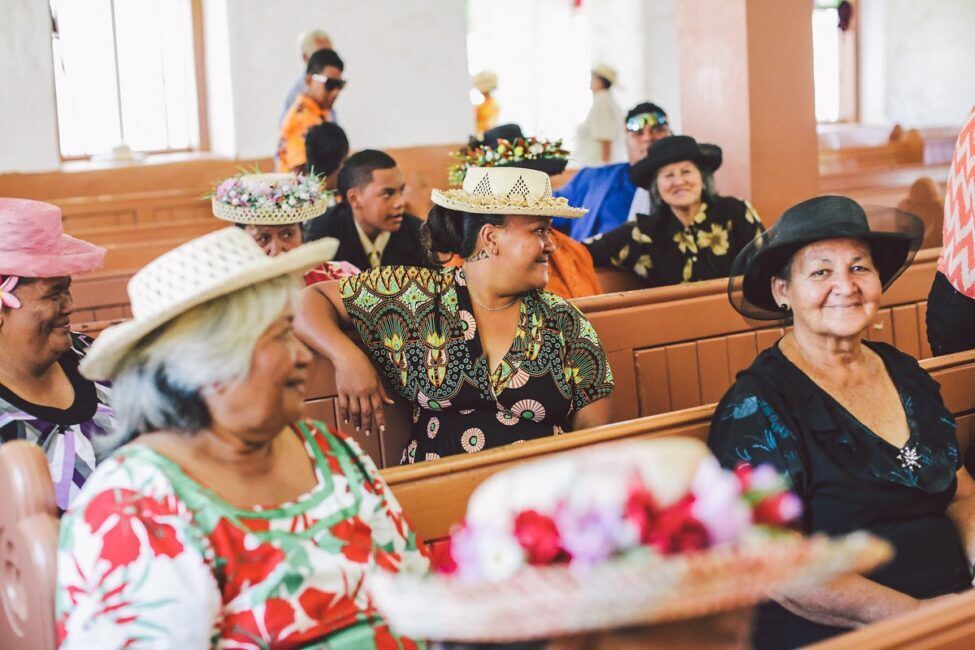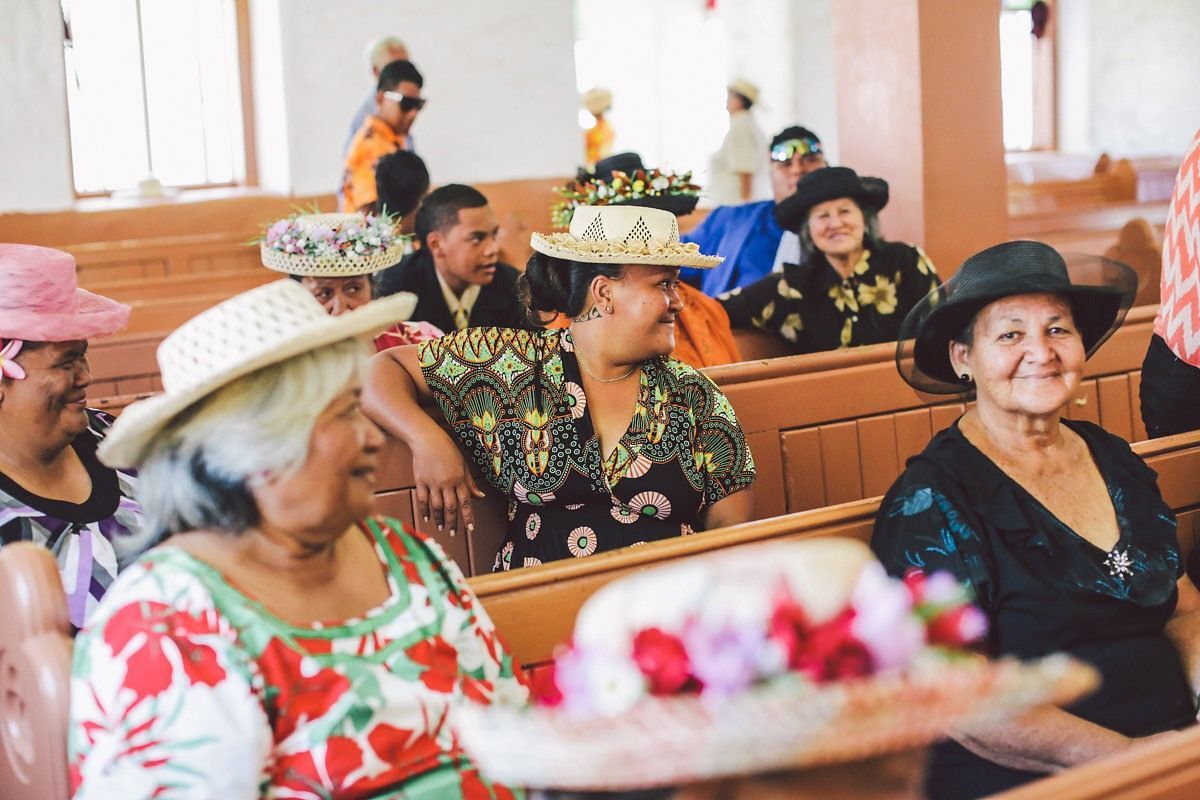How to Plan a Trip to Rakahanga
A rectangular coral atoll lying nearby Manihiki in the Cook Islands, Rakahanga is the remotest of the two islands, only accessible by boat from Manihiki. Whereas Manihiki is famous for its black pearls, Rakahanga’s “jewels” are the finely woven rito hats and mats crafted by the island’s locals.
While most of the coral atolls’ islets are dense in coconut trees and lined with white sandy beaches, the main village – Nivano – is impeccably tidy with a recently refurbished church, a school, two small shops and the Island Administration offices. Discover why Rakahangans are proud of their islands by taking a trip of a lifetime to this remote destination. Learn how in this complete travel guide to Rakahanga.
Frequently Asked Questions About Rakahanga
We’re here to tell you everything you need to know about Rakahanga in the Cook Islands, so we won’t waste any time in this Rakahanga travel guide giving you the answers to the questions that most travellers have about visiting.
Where is Rakahanga?
Rakahanga is located in the Northern Group of the Cook Islands, approximately 42km (26 miles) north of Manihiki and 1,088km (676 miles) north of the nation’s capital, Rarotonga. The Cook Islands is located in the South Pacific, which you can learn more about in Where are the Cook Islands Located?
How Do I Get to Rakahanga?
The only way to get to Rakahanga is by boat from Manihiki. Flights can be taken to Manihiki from Rarotonga. Learn more about how to get to Rakahanga in the “How to Get to Rakahanga” section below.
What is the Population of Rakahanga?
The population of Manihiki is around 80 people.
How to Get to Rakahanga
Although there is an old airstrip on Rakahanga, it is no longer in use (it is too busy being reclaimed by the jungle). The only way to get to Rakahanga is by sea.
Most get to Rakahanga by taking a boat/ferry from Manihiki. There is no “schedule” for the ferry; it is arranged when the demand is there and when the weather conditions are calm enough. The journey between the two lagoons takes approximately two hours.
Find out how to get to Manihiki in The Complete Travel Guide to Manihiki.
Getting Around Rakahanga
There are crushed coral roads on the main island of Rakahanga, but a vehicle won’t be necessary to get around the village. The island is easy to walk around. Your host can organise a boat to explore the lagoon and other “motu” (islands).
Find out more about how visitors typically travel around the Northern Cook Islands with our Northern Cook Islands Transport Guide: 9 Ways to Get to (& Around) the Northern Group.
Where to Stay in Rakahanga
There is no formal accommodation for tourists visiting Rakahanga. Your stay in Nivano will be with a host family as a homestay. Accommodation can only be organised through Rakahanga Island Administration, whose most recent contact details are best obtained through Cook Islands Tourism.
Needless to say that homestays in Rakahanga are rather basic. All of your meals will be provided by your host. Drinking water is usually available through filtered rainwater, but it’s best to take precautions as outlined in our guide, Is the Water Safe to Drink in the Cook Islands?
6 Best Things to Do in Rakahanga
Visiting Rakahanga is experiencing a slice of life in a small community on an isolated island. Needless to say, there are no organised tours or lagoon cruises. Anything that you do on Rakahanga will be arranged by your host family or whoever you’re savvy enough to get talking to. Just mingle with the community and see what adventure you get up to.
- Experience island living and learn about breadfruit and copra farming and rito crafting
- Cruise the Rakahanga Lagoon
- Go fishing with the locals
- Relax on the glorious beaches
- Listen to the singing at a Sunday church service
- See the world’s largest crabs.
1. Experience Island Living
Rakahanga has a strong sense of community, friendliness and interesting local industry, whether it’s farming breadfruit, copra or “puraka” or crafting “rito” (bleached pandanus leaf) hats that are exported to Rarotonga. Meet the locals and learn more about their lives on this remote island.
2. Cruise the Lagoon
Locals with boats can take you out on Rakahanga’s gorgeous lagoon, showing you awesome snorkelling areas and dropping you off at uninhabited motu.
3. Fishing with the Locals
Try reef fishing or deep sea fishing with the locals. The tuna season is in January when the island’s exciting fishing competitions take place. If you show interest to your host, they’re sure to find some fisherfolk who’ll take you out.
4. Relax on the Beach
Rakahanga and its motu are home to idyllic beaches and stellar swimming spots facing the lagoon. Take some time to take it all in.
5. Listen to the Singing in Church
Like on all of the Cook Islands’ inhabited islands, the church services are amazing to experience on a Sunday morning with singing that is sure to move you. In the village of Nivano, there is a CICC Church and Catholic Church with services on a Sunday and the Seventh Day Adventist Church with a service on a Saturday.
6. See Coconut Crabs
What have otherwise been eaten to extinction on many of the other Cook Islands, coconut crabs or “unga” are the largest types of crabs in the world and can be spotted tearing off coconut husks with their huge claws. They are more likely to be seen after dark or in the early morning.
See more typical Cook Islands experiences in the 101 Best Things to Do in the Cook Islands: The Ultimate List.
The History of Rakahanga
Like many Polynesian legends, it is told by the local people that Rakahanga was fished from the sea. The haul broke into two pieces, Rakahanga and Manihiki.
European Discovery
And like many European legends, Rakahanga was “spotted” on round-the-world expeditions, first believed to have been sighted by Portuguese explorer Ferdinand Magellan in 1521. On March 2 1606, the commander of Capitana and Almiranta, Pedro Fernandez de Quiros (who discovered Pukapuka 10 years earlier) sighted Rakahanga, where reports mainly revolved around the beauty of the island’s women. He named the island “Gente Hermosa” meaning “Beautiful People”.
Splitting the People
More than 200 years passed before more European ships visited Rakahanga again, first by a Russian expedition in 1820 and a series of whaling and trading ships soon after. And in 1849, Polynesian missionaries arrived on nearby Manihiki to find that the people there lived and travelled between Rakahanga and Manihiki regularly. The missionaries convinced the locals to split and stay on either one of the two islands to put an end to the lives that were being lost at sea when the locals would make the voyage.
Nevertheless, the islands have still worked together in times of need. In 1997, for instance, when Cyclone Martin devastated crops on Manihiki, Rakahangans provided the island with food.
More About Rakahanga and the Cook Islands
That’s it for our complete travel guide to Rakahanga in the Cook Islands. For more less-explored islands to visit, check out the following guides:
- The Complete Travel Guide to Manihiki
- The Complete Travel Guide to Penrhyn
- The Complete Travel Guide to Pukapuka
- The Complete Travel Guide to Nassau
- The Complete Travel Guide to Suwarrow
- The Complete Travel Guide to the Southern Cook Islands
Finally, plan the rest of your Cook Islands expedition using The Best Cook Islands Travel Guide and the 30 Tips for Travelling in Rarotonga & the Cook Islands.
Author
Laura S.
This article was reviewed and published by Laura, editor-in-chief and co-founder of Cook Islands Pocket Guide. Since arriving solo in the South Pacific over 10 years ago with nothing but a backpack and a background in journalism, her mission has been to show the world how easy (and awesome) it is to explore a paradise such as the Cook Islands. She knows the islands inside out and loves sharing tips on how best to experience Raro’s must-dos and hidden gems. Laura is also the editor of several other South Pacific travel guides.

